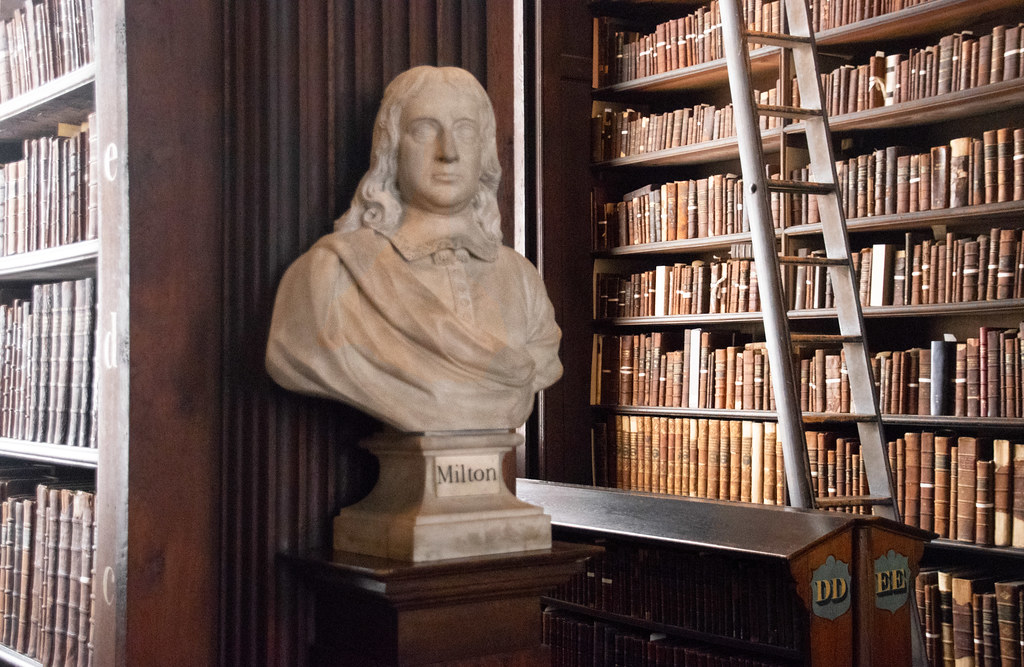“The four new sculptures to be commissioned for the Long Room by Trinity, are set to make history as the first sculptures commissioned by the college since the 1880s”
The four new sculptures to be commissioned for the Long Room by Trinity are set to make history as the first sculptures commissioned by the college since the 1880s, and, more importantly, the first sculptures of female scholars. The statues and busts that surround us on campus occupy a prime position in our college experience, whether we realise it or not. They serve as a constant reminder of the scholars that came before us and the contributions they made to the world. They are a physical representation of the potential we each have to achieve great things. This project seeks to rectify the lack of recognition of female scholars in a college with a population that has consisted primarily of women since the 1980s. Unfortunately, Trinity is not free from a misogynistic past, only admitting women for the past hundred years. These first female students didn’t have it easy as they had to be off campus by 6pm and did not have access to common areas such as dining facilities, God forbid they mingle with the male populace. These restrictions sound absurd to the sane among us, and so the commissioning of these busts acknowledging the accomplishments of female scholars will make a statement about what Trinity has become.
The Trinity Long Room is perhaps the most visited area of the college, with over half a million visitors enjoying the beauty of the library each year. It is therefore essential that we use the space to represent what our college stands for in the 21st century — a diverse and inclusive environment that champions the potential of each student who crosses the cobbles. That being said, a room of 40 male busts is as appropriate as a rule obliging women to leave the campus after 6pm! While Ireland still has a way to go in terms of reaching gender equality, no longer can we allow women, past or present, fall to the margins as the sculptures around us essentially erase women from history.
“The four women chosen to grace the Long Room are scientist Rosalind Franklin, mathematician Ada Lovelace, dramatist and theatre-founder Lady Augusta Gregory, and writer and women’s advocate Mary Wollstonecraft.”
While there were no female Trinity students at the time of the last commissioning, that is of course not to say there were no women worthy of recognition at the time. Trinity asked both staff and students to nominate outstanding women for consideration to join the likes of Cicero and William Shakespeare in all of their marble glory. The panel in charge of the commission were inundated with over 500 nominees to consider, clearly highlighting the abundance of female inspiration to choose from. The four women chosen to grace the Long Room are scientist Rosalind Franklin, mathematician Ada Lovelace, dramatist and theatre-founder Lady Augusta Gregory, and writer and women’s advocate Mary Wollstonecraft; two representatives of the Sciences and two representatives of Arts and Humanities. Together, their work spans three centuries, from women’s rights movements in the 18th century to early work on the Polio virus in the 20th. The physical presence of these women in the Long Room demonstrates the progress made in terms of equality in the last century. Initiatives like this will lift women from the obscurity of a male-dominated past, inspire women to follow in their footsteps, and achieve great things in the future. As a society we thrive on diversity and exhibiting that diversity is the way forward.
“Many milestones on the road to equality have been met in the past century but this push for equality in representation, is fundamental in highlighting the progress of our society and the fantastic contributions made by women.”
Since the first female student, Trinity has become a different place. It is hard to imagine a time when men were fiercely opposed to admitting female students. The college notes that the installation of these new sculptures is subject to funding, but it is imperative that projects such as these are prioritised. Many milestones on the road to equality have been met in the past century but this push for equality in representation is fundamental in highlighting the progress of our society, and the fantastic contributions made by women. Women should no longer appear as a footnote in male history, just as the sculptures displayed should no longer be of men by default. Implementing a project like this allows students to see their potential reflected in the sculptures that surround them. What we challenge today, will become the norm in what will remain a wonderfully diverse college. This is no longer a man’s world.






